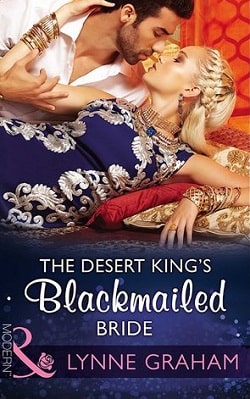Now David worried about the importance of keeping their appointment with Dr. Du. “Shouldn’t we be going straight to Watson and Guang?”
“We will, David. But the bear bile is at the heart of this.” When he grudgingly agreed, she said, “We don’t know anything about that business. Dr. Du’s the only person I know who can help us.”
While David and Hulan went inside the Beijing Chinese Herbal Medicine Institute, Peter sped off to Cao Hua’s apartment to look for the Panda Brand products that Hulan had seen in the refrigerator. The institute’s elevator still wasn’t working, so they walk
ed up the six flights of stairs to Dr. Du’s office. He greeted them warmly, ordered tea, and asked, “How can I help you?”
As Hulan and David quickly ran through their recent discoveries, Dr. Du shook his head in sympathy. When they were done, he said, “You want to know about bear bile, and I will tell you. But you have to understand about our medicine first.”
Hulan glanced at David. They were in a hurry, but they needed this information. “Whatever you think best, Doctor.”
“Good,” Dr. Du said. In his grave, scholarly way, he told them that Chinese herbal medicine could be traced to 3494 B.C., making it the longest continuously used medical tradition in the world. “To this day, every person gets the same prescriptions, but the skill is in how you create the proper dose. If you can master that, then you can become the best doctor in all of China. You look at me. I have practiced for thirty years and seen thousands and thousands of patients, but never the same dose.”
“Forgive me, Doctor, for not knowing more,” Hulan interrupted, “but I remember something about medicines to cool or heat the body.”
“Oh, yes. We think of the four essences—cold, hot, warm, and cool. But I also consider the four directions of action for a medicine—ascending, descending, floating, and sinking. I use the five flavors—pungent, sweet, sour, bitter, and salty.”
“How do you know what dose to prescribe?” David asked.
“By the age of the patient. By the seasons. I have to determine if someone needs a cooling medicine or one for heating if it’s summer or winter. By where someone is from. In China people eat different foods in different provinces. What I would prescribe for someone from Sichuan is different from what I would give someone from Guangdong Province. The weather is mild and hot in Sichuan. The people eat hot and spicy food. The medicine I would give a Sichuanese would have a strong fragrance and be powerful. For a Cantonese, who has a cool diet, I would give something bland.”
Suddenly Dr. Du stood. “Come, I will show you.”
As they followed him down the hall, Hulan asked, “Do you use Panda Brand products?”
“Sometimes,” Dr. Du said. “But you will see, we like to make our own prescriptions.”
He stopped at a door, unlocked it, and they stepped into a storeroom. The floor space was taken up with huge burlap bags, each opened and peeled back to reveal its contents. Hulan and David recognized the cloves, cinnamon, cardamom, nutmeg, and dried tangerine peel; they learned these were good for hiccup, wheezing, staph infections, salmonella, flu, and a variety of other symptoms. They saw chunks of raw minerals—some crystalline or chalklike; others were just jagged pieces of rock—fluorite, amber, pumice, borax, and cinnabar. Dr. Du showed them tubers, roots, and rhizomes in every size, variety, shape, and color. In one bag was something that looked like saffron, while in another, dinner plate-size patties of dried yellow flowers lay in stacks. They saw burdock root, lotus plumule, swallowwort root, chinaberries, and lichee and ginkgo nuts.
Dr. Du did his best to explain what the herbs were used for. Even Hulan struggled with many of the Mandarin words, not knowing their English equivalents. Some of the herbs Hulan couldn’t have translated even if she’d wanted, for they were grown only in remote areas and had esoteric names. When this occurred, she used a literal translation—“Commerce Continent,” “Sweet Process,” “Chicken Blood Wine,” “Snake’s Bed Seeds,” or “King Who Does Not Stay But Departs.”
Dr. Du took them to another room, which held the medicinals derived from the animal world. Here again were burlap sacks overflowing with abalone, clam, and turtle shells. These and other minerals, Hulan and David were informed, anchored the spirit by reducing irritability, insomnia, palpitations, and anxiety. Sacks overflowed with dried sea horses—used for impotence and incontinence. Dried scorpions were separated by size and placed in large tin bowls. Similarly silkworms were separated by stages of development as well as by “healthy” and “sick.” Yet another bowl held silkworm feces—good for rashes, spasms of the calf muscles, and diarrhea. They saw piles of snakes dried into coils and hundreds of dried centipedes tied together in bundles.
“I know this is a delicate issue,” David said at last, “but I understand that many of the medicines come from endangered animals…”
“Bears, tigers, rhinos—I don’t use those.”
“You answer very quickly,” Hulan said, the investigator coming out in her.
“I answer quickly because every spring the government sends me from province to province to educate other practitioners about alternatives.”
“What about bear bile?” David persisted.
“Bear gallbladder was first prescribed three thousand years ago,” Dr. Du answered. “Since then many scholars have written about the benefits of bear bile, meat, brain, blood, paw, and spinal cord. But the gallbladder is considered to be the most important part of the bear and very strong—like rhino horn, ginseng, or deer musk.”
“I’m sorry,” David said in exasperation, “but you can’t really believe this stuff works.”
There was a long silence. At last Dr. Du spoke. “The ingredients may sound strange, but actually your drug companies use many of these same compounds or synthetic versions in their products, because they’ve been proven to work. Ursodeoxycholic acid is the active ingredient in bear bile. The synthetic version the U.S. makes dissolves gallstones and is showing promise in treating a usually fatal form of cirrhosis of the liver.”
Dr. Du’s stern look transformed into a smile, the white ghost’s impudence forgiven. “Now, I could use cow or pig gall…”
“But?”
“The pig and the bear have habits very much like human beings and they eat the same food. Some doctors use cow gall at a very high dose, but I’m not so sure. Who among us is like a cow?” When he received no response, Dr. Du continued, “I prefer to use gardenia, rhubarb, peony root, even Madagascar periwinkle in place of bear gall, but as I said earlier, only a good doctor will know how to prescribe them.”
“Can’t you use farmed bile?”
Dr. Du answered, “There are some people who believe they can farm bears for their bile. But let me tell you something. What they do to those bears is terrible.”















